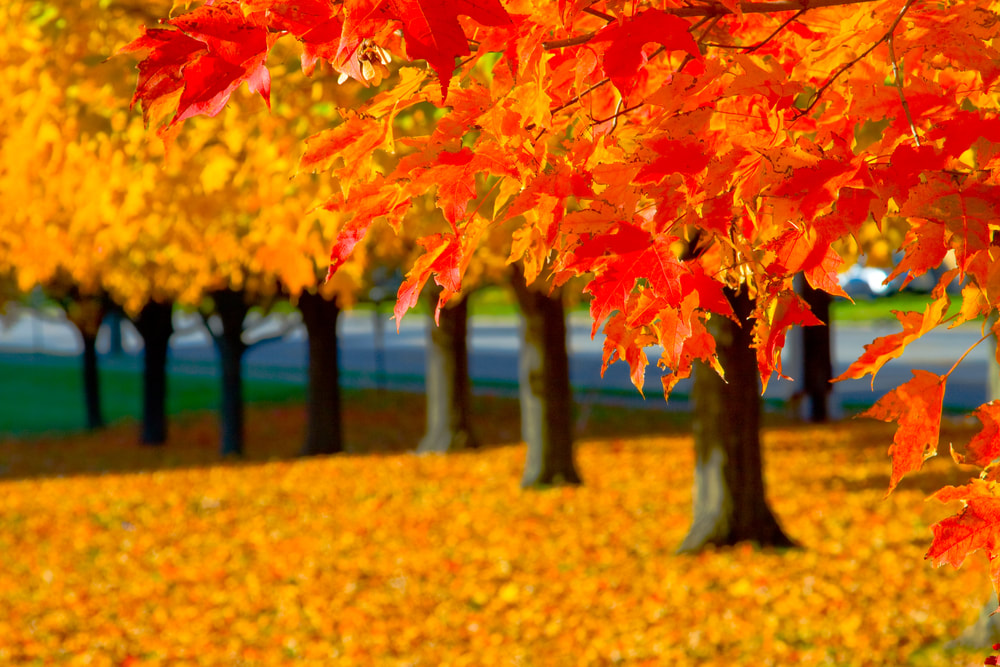|
1. Fall colours are caused by the amount of sugar in leaves First things first: of course, we have to talk about the beautiful fall colours. The pigment that gives leaves their familiar green colour is called chlorophyll. However, the more favourable warm, sunny day and cool night temperature cycles that occur in early autumn, the more likely that fall season is to experience vibrant colours with lots of reds. The more red in the leaf, the more sugar that leaf is storing. That is why Maple trees are so vibrant. Evergreens don’t change because their leaves have a thick wax covering that protects the chlorophyl (green) in the leaves. 2. Pumpkin spice has nothing to do with pumpkins Are you a PS lover? Did you know that pumpkin spice is actually the spice mix used for pumpkin pies? It is made from 3 tablespoons ground cinnamon, 2 teaspoons ground ginger, 2 teaspoons ground nutmeg, 1 ½ teaspoons ground allspice and 1 ½ teaspoons ground cloves. You can make it at home or buy it pre-mixed at the grocery store. For some amazing pumpkin spice recipes, check out this great cooking blog by Simply Stacie. 3. Birds spend most of the fall migrating Many birds spend this season travelling to mating grounds or finding food. Canada geese fly south in autumn and return to their birthplace in spring. If you think that the Swainson’s Hawk is crazy because it migrates 22,500 kilometres (14,000 miles), you haven’t met the Arctic Tern yet. The Arctic Tern is zigzagging from the North Pole to the South Pole, which accounts for an incredible 71,000 kilometres (44,000 miles). 4. Autumn used to be called “harvest” Until about 1500, autumn was just called “harvest”. The full moon closest to the autumn equinox is known as a harvest moon. Before cities electrified, the bright night of the harvest moon was essential for farmers harvesting their late-year crops. 5. The aurora borealis is more likely to occur this time of year The aurora borealis, also known as the Northern Lights, is a magnificent spectacle which is typically 3° to 6° wide in latitude and between 10° and 20° from the geomagnetic poles at all local times (or longitudes), most clearly seen at night against a dark sky. These geomagnetic storms occur when charged solar particles squeeze through our atmosphere’s defenses and collide with gaseous particles in Earth’s sky. Thanks to longer, clearer nights, this free light show occurs twice as often during fall and winter months. 6. People wore Halloween costumes to either hide from ghosts or scare them
It has been suggested that the custom of wearing costumes on or around Halloween comes from the Celtic festivals of Samhain and Calan Gaeaf, or from the practise of "souling" during the Christian observance of Allhallowtide. Halloween costumes are traditionally based on frightening supernatural or folkloric beings or hiding from them. 7. Some places don’t have an autumn season Autumn is a much loved season, especially in Canada and the Northeast of the United States such as New England. However, in tropical climates near the Equator, like the Caribbean islands, weather stays mild all year. Maybe this is why visitors to Maple Syrup Country cannot get enough of the beautiful fall foliage with its breathtaking red, yellow and orange leaf displays!
0 Comments
Your comment will be posted after it is approved.
Leave a Reply. |
AuthorJean-Pierre Romain, Maple Maniac Archives
December 2020
Categories |





 RSS Feed
RSS Feed